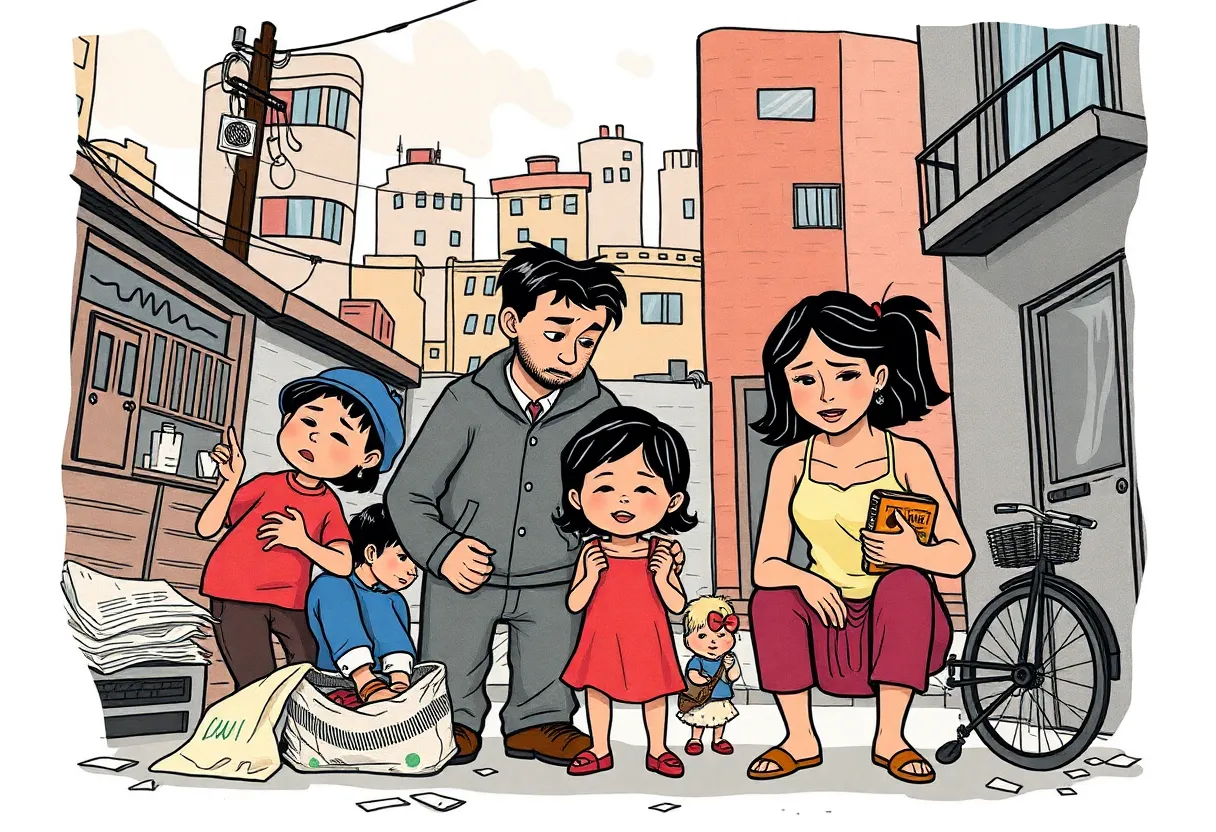News Summary
Low- and moderate-income households in Northeast Ohio are facing severe financial strain as grocery prices have surged 29% since pre-COVID times. Families are increasingly prioritizing rent over food, indicating a rising demand for assistance from food banks and nonprofits. Economic anxiety is reflected in surveys, showing that consumer optimism has significantly dropped among lower-income families. The situation is exacerbated by skyrocketing rent and utility costs, with many families delaying essential purchases and relying on local organizations for support.
Cleveland – Low- and moderate-income households in Northeast Ohio are facing significant financial strain as rising grocery prices and inflation disrupt their daily lives. Grocery costs have surged by 29% since the pre-COVID period, forcing families to make difficult decisions about essential expenditures. Many in the region, including Cleveland residents, are prioritizing rent payments over purchasing food, which has led to increased demand for assistance from local food banks and nonprofits.
Amanda Chisholm, CEO of Step Forward, highlights that families are increasingly engaged in painful trade-offs. They are often faced with choosing between paying rent and maintaining essential grocery supplies, or postponing necessary home repairs. This heightened economic anxiety is reflected in a University of Michigan survey, which indicates that consumer optimism about the economy has dropped from 74.4% in September 2024 to 51.8% in September 2025, with the most pronounced decline among lower and middle-income families.
The pressure of rising costs is palpable for many, as illustrated by the experience of Cleveland mother Traylee Little, who now spends $100 on just a few grocery items. According to Pew Research Center data, 62% of U.S. adults regard food prices as critically significant, escalating to 75% among lower-income households. Food prices alone have seen a 3.2% increase from August 2024 to August 2025, outpacing overall price hikes of 2.9%.
The financial situation for families has worsened further, as the Federal Reserve Bank of Cleveland reports that 76% of low- to moderate-income respondents have reported diminished financial well-being over the past six months. Common concerns include soaring rent and utility bills, high food prices, and a lack of affordable housing options. According to a Gallup Poll from October 2024, over half of Americans feel worse off today compared to four years ago.
There is also a widening income gap anticipated due to recent federal legislation, leading to fears that economic disparities will deepen. The Massachusetts Institute of Technology identifies a “livable wage” for a single adult in the Cleveland area at $20.38 per hour; however, only a quarter of local jobs pay this amount for households with one adult and one child. As a result, nonprofits in the region are seeing increased demand for their services, while programs like the Boys & Girls Clubs of Northeast Ohio are facing funding cuts.
Little, who recently began working full-time, faces increased challenges as her rent for a subsidized apartment now totals $1,000 a month, leading her to cut back on other utilities and limit air conditioning to reduce expenses. The Greater Cleveland Food Bank has reported a rise in service demand and operational costs attributed to increasing food prices. In 2024, the food bank distributed over 54 million meals to more than 424,000 individuals, many of whom were seeking help for the first time.
As families continue to grapple with these financial pressures, many are delaying major purchases, including home repairs and new vehicles. Respondents to recent surveys relay concerns about the escalating costs affecting their ability to save for medical expenses and retirement. The rising utility and healthcare costs, along with continual inflation, contribute to widespread uncertainty and anxiety about the future.
Overall, the trend of economic strain and the pressures of inflation are leading to greater challenges for low-income households in Northeast Ohio, with the situation likely to escalate further in the coming months. Local organizations are left uncertain about how to effectively plan their services amidst changing federal policies and the ongoing economic crisis.
Deeper Dive: News & Info About This Topic
HERE Resources
Additional Resources
- Crain’s Cleveland: Ohio Families Navigate Rising Costs
- Google Search: inflation impacts on Ohio families
- Cleveland.com: What Ohioans Aren’t Buying
- Encyclopedia Britannica: Inflation
- Fox8: Cleveland Among Cities That Spend Most on Groceries
- Google News: cost of groceries in Cleveland

Author: STAFF HERE CLEVELAND WRITER
The CLEVELAND STAFF WRITER represents the seasoned team at HERECleveland.com, your premier source for actionable local news and information in Cleveland, Cuyahoga County, and beyond, delivering "news you can use" with in-depth coverage of product reviews for personal and business needs, local business directories, politics, real estate trends, neighborhood insights, and state news impacting the region—backed by years of expert reporting and robust community input, including local press releases and business updates, while providing top reporting on high-profile events like the Rock and Roll Hall of Fame inductions, Cleveland International Film Festival, and holiday parades, alongside key organizations such as the Cleveland Clinic, Cleveland Orchestra, and Great Lakes Science Center, plus leading businesses in manufacturing and healthcare like Sherwin-Williams and University Hospitals, and as part of the broader HERE network including HEREDayton.com, offering comprehensive, credible insights into Ohio's vibrant landscape. HERE Cleveland HERE Dayton





